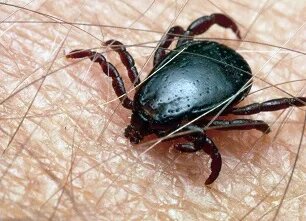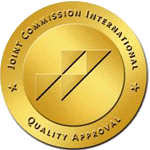Tick-borne encephalitis

Tick-borne encephalitis is an acute viral disease that mainly affects nerve cells in the human body. This can be brain structures, peripheral innervation or radicular nerve endings in the spinal cord.
The main source of infection is the taiga tick. These insects require animal or human blood to reproduce. The spring and summer seasonality is related to the biology of tick carriers. The virus entering the stomach of the tick with the blood of infected animals penetrates all the organs of the tick and is then transmitted to other animals as well as transmitted to the offspring of the tick (transovarian transmission of the virus).
The penetration of the virus in the milk of farm animals (goats) has been proved; therefore alimentary ways of infecting humans via goats and cows are possible. Alimentary “goat” endemic encephalitis foci have been established in various regions of the former Soviet Union.
Where is tick-borne encephalitis common?
Ixodes ticks are common in forest and forest-steppe zones with a temperate climate. Several species of these parasites are known, but, as a rule, tick-borne encephalitis occurs after Ixodes Persulcatus (taiga tick) or Ixodes Ricinus (European forest tick) bites. The former is more common in Asia, the latter in the European region.
Currently, the disease of tick-borne encephalitis is also registered in Kazakhstan.

Incubation period
The time from the moment of infection to the appearance of the first symptoms of tick-borne encephalitis is about 10-14 days. The incubation period can be lengthened in people who were vaccinated against tick-borne encephalitis in childhood.
There are also several stages of the disease:
- Immediate. In this case, the initial symptoms appear within the first day. Without adequate treatment, the patient quickly falls into a coma and dies of central nervous system paralysis.
- Prolonged. In this case, the incubation period may be about a month, sometimes even slightly longer.
The first signs of the disease (what you should pay attention to): usually a week after a holiday in nature a person suddenly has a headache, nausea, vomiting, not bringing relief, increased body temperature up to 39-40 °, marked weakness. Then join brain symptoms: limb paralysis, strabismus, pain along the nerve endings, seizures, loss of consciousness.
Symptoms of tick-borne encephalitis
After a tick bite, the virus multiplies in the tissues and enters the lymph nodes and bloodstream. As the virus multiplies and enters the bloodstream, flu-like symptoms form. The virus penetrates the blood-brain barrier and affects brain tissue - neurological symptoms occur.
But the brightness of clinical manifestations, the rapidity of their growth and specificity always depend on which subtype of the disease and the location of the virus localization.
- European - it is characterized by two phases. The first one is similar to the flu and lasts about a week. Lesions of the nervous system of varying degrees characterize the second phase: from mild meningitis to severe encephalitis.
- Far Eastern - usually begins with a febrile state, runs acutely. Other symptoms can also increase just as quickly, leading to paralysis and coma. Fatal outcome could be as early as 6-7 days.
- Febrile. Tick-borne encephalitis virus does not affect the CNS, only fever symptoms appear, namely high fever, weakness and body aches, loss of appetite, headache and nausea. The fever may last up to 10 days. The cerebrospinal fluid does not change, and there are no symptoms of nervous system damage. The prognosis is most favorable.
- Meningeal. After a period of fever, there is a temporary drop in temperature, the virus at this time penetrates the nervous system, and the temperature rises sharply again, there are signs of neurological disorders. Headaches with vomiting, severe photophobia and stiffness of the muscles at the back of the head, symptoms of irritation of the brain membranes appear, there are changes in the cerebrospinal fluid.
- Meningoencephalitic. Characterized by lesions of the brain cells, characterized by impaired consciousness, mental disorders, convulsions, weakness in the limbs, and paralysis.
- Poliomyelitic. The onset of this form of the disease is manifested by severe fatigue, general weakness. Numbness in the body appears, followed by flaccid paralysis of the muscles of the neck and arms, the proximal parts of the upper extremities. The "dangling head" syndrome appears. The increase in motor disorders occurs within a week, after which there is atrophy of the affected muscles. Poliomyelitic form of the disease occurs quite often, almost 30% of cases. The course is unfavorable, disability is possible.
It should be noted that susceptibility to tick-borne encephalitis varies from person to person. If a person has lived in a natural area for a long time, he or she may be repeatedly bitten by ticks and get small doses of the virus. After this, antibodies are produced in the blood, the accumulation of which contributes to the development of immunity to the virus. If such people become infected, the disease will have a mild form.
Diagnosis of tick-borne encephalitis
In the case of tick-borne encephalitis, the diagnosis is made with the help of brain tomography, serological and virological tests. Based on all indicators, a precise diagnosis is established.
Brain damage is determined primarily on the basis of complaints during a neurological examination by a doctor. The presence of inflammation and the nature of brain damage are established, and the causes of encephalitis are determined.
How to treat tick-borne encephalitis
There is no specific treatment for tick-borne encephalitis. If symptoms suggestive of central nervous system damage (meningitis, encephalitis) occur, the patient should be hospitalized immediately for supportive therapy. Corticosteroids are often used for symptomatic treatment. In severe cases it is necessary to intubate the trachea, followed by artificial lung ventilation.
Etiotropic therapy consists of the administration of homologous gamma globulin titrated against tick-borne encephalitis virus. Thanks to this drug you can observe a clear therapeutic effect, especially if we are talking about a severe or moderate course of the disease. Gamma globulin is administered 6 ml intramuscularly every day for three days. Therapeutic effect shall be observed 13-24 hours after the drug administration - the patient's body temperature shall return to normal, the general state shall improve, meningeal signs and headaches shall decrease or even disappear totally. In recent years for the treatment of tick-borne encephalitis serum immunoglobulin and homologous polyglobulin are used, which are obtained from the blood plasma of donors living in natural foci of tick-borne encephalitis.
Only 2-3 weeks after intensive treatment, under the condition of normalization of body functions and stabilization of the condition, the patient can be discharged from the hospital. Heavy work and mental overexertion are contraindicated. Regular walks are recommended, and it is advisable to use agents that repel ticks. Visits to the doctor are mandatory for two years.
Tick-borne encephalitis and its prevention
As a specific prevention of tick-borne encephalitis vaccination is used, which is the most reliable preventive measure. All persons living in or traveling to endemic areas are subject to compulsory vaccination.
As an emergency prophylaxis in case of ticks biting, unvaccinated persons receive intramuscular immunoglobuline of 1.5 to 3 ml. depending on their age. After 10 days, the drug is injected again in an amount of 6 ml.




